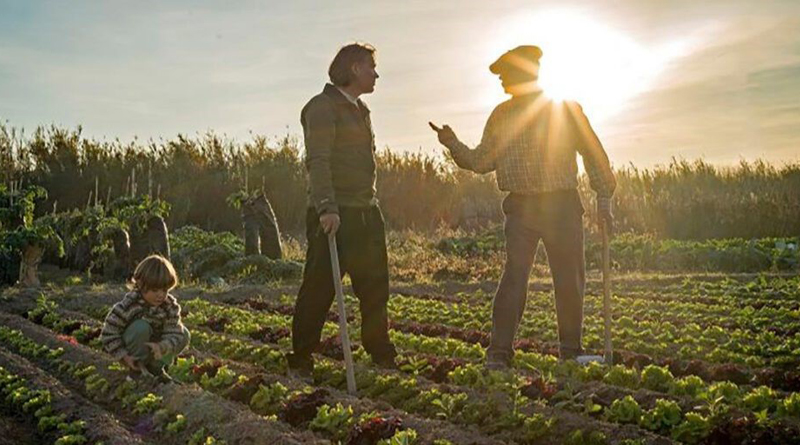NAVARRE – GASTRONOMIC HEART OF SPAIN
Navarre is to Spain what Kent is to the UK; Spain’s garden is where some of the country’s most delicious vegetables are grown, and when you visit Navarre the gastronomy should form an important part of your trip.
But it’s not just about eating the food – it’s also about seeing where it is grown, meeting the producers, and learning more about the provenance.
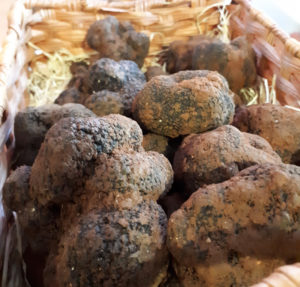
Let’s start with truffles. 50% of the truffles picked in Europe are grown in Spain and the majority of these are from northern Spain. 90% of European truffles are cultivated – not wild. And these days they are sniffed out by dogs (who don’t eat them), rather than pigs (who love them).
Truffles are still so popular that 100% of the crop is sold every year – the demand always outstrips the supply. 95% are exported as truffles aren’t actually that popular with the Spanish. This is a legacy of the Medieval period when the Catholic Church banned truffles claiming they were the ‘Devil’s Fruit’.
But Spain’s loss is our gain – we get to enjoy the wonderful truffles they grow. There are over 100 varieties and some claim over 150 different smells within a truffle; a bit like a fine wine.
Truffles are basically a fungus that grows in the roots of trees, they are found under the ground, not above it, and when broken open they release 1000s of spores. The strong smell is believed to have evolved to allow them to attract animals, who would dig them out and eat them. As they munched, moved, and defecated the spores would be spread and the truffles would colonise new tree root systems.
A great place to learn more, and try these delicious (and rather pricey) delicacies, is The Truffle Museum just outside Pamplona. Here you can learn, taste and buy. You can even brave a bar of their truffle chocolate!
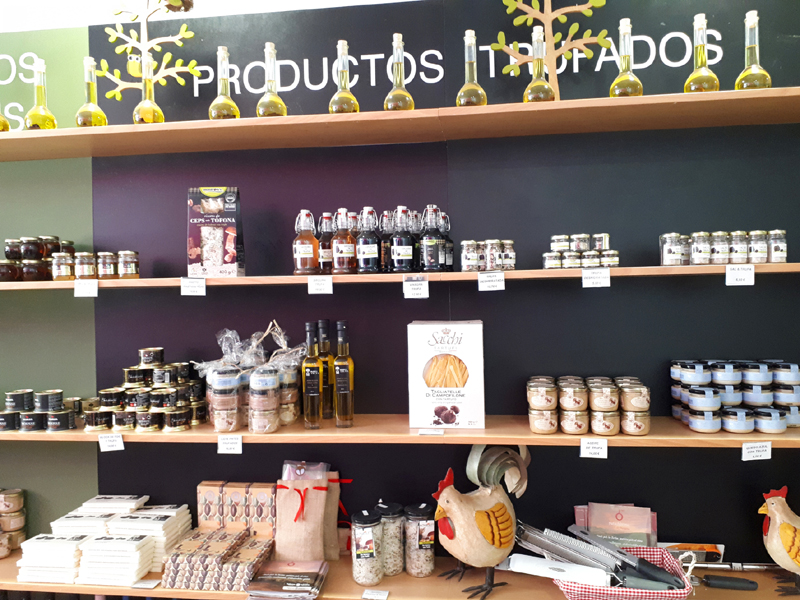
But it’s not all good news; climate change is having an impact on the farming of truffles. With temperatures increasing and humidity decreasing, truffle crops are at risk. Recently the EU invested 23million Euros in creating water channels to ensure the ground and the air is damp enough to allow Spain to continue to produce these delicious mushrooms.
Once you’ve had your fill of truffles head to Bodegas Aroa. Watch the sunset from their terrace and then try some of their organic-biodynamic wines.
They are based in the Yerri Valley, which is one of the higher areas of Navarra and is strongly influenced by the Cantabrian sea. Their philosophy is to be as natural as possible in the wine-making process.
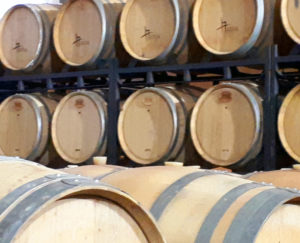
For example, the winery has two underground rooms where the tanks and barrels used for winemaking are located. These are naturally climate and humidity controlled. After the grapes are harvested by hand, they enter the tanks from the top, using gravity rather than pressure pumps, which could damage the harvest and ultimately affect the taste. They only use soft pressing and natural gravity decanting in order to impact the grapes as little as possible. The wine is then matured in French oak barrels.
All their wines are vegan, and they even have a range with no added sulphites.
If you’re feeling peckish, stop for dinner in their restaurant and enjoy food made with locally sourced ingredients – some as close as the vineyard’s own kitchen garden.
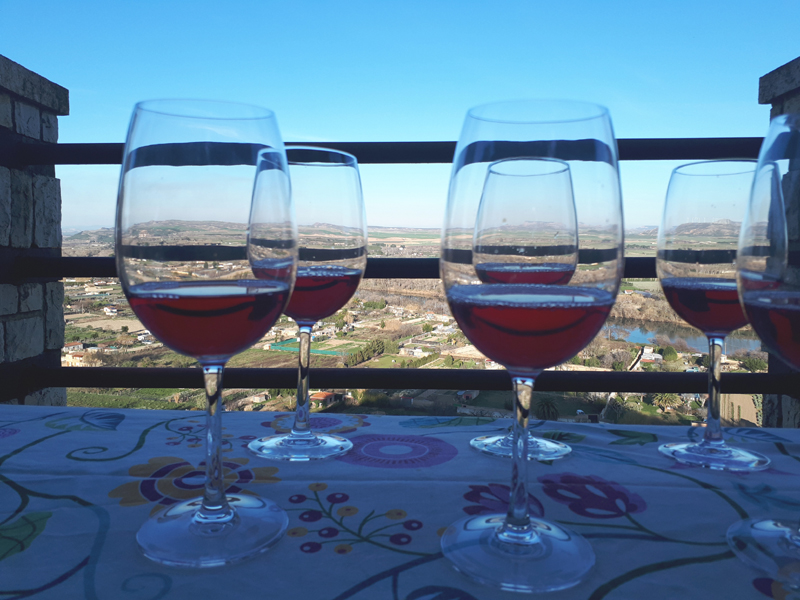
As a lover of vegetables, I’d recommend a trip to Tudela. Take the short walk up the Santa Barbara Hill and see wonderful panoramic views of the town, the River Ebro and the small-scale farms where local families have grown vegetables for centuries.
Although in the past many of the younger people left the farms and headed for urban areas, there is now a slow trickle of returners, those wanting to keep the traditions alive and find a way to make a living from the land.
This does make sense as the area is part of the highly fertile flood plain of the Ebro. Here you will see, depending on the season, Navarre’s big five: cardoon, borage, artichoke, asparagus, and piquillo peppers. Served fresh with delicious Spanish olive oil.
All the vegetables are worth trying here as they are loaded with natural flavour (forget those dreadful UK supermarket tomatoes!). In particular, if the season is right, try cardoon, borage and white asparagus.
The white asparagus is a favourite food in the area, with a softer texture and taste than the green. Even out of season you can buy tinned varieties to take home with you.
Cardoon is a giant plant, it’s a bit prickly (see me embracing some, carefully, below) and it requires a lot of preparation before it can be cooked: stripping away the spines, leaves and slightly furry outside. So, it’s best eaten in a restaurant, or if you’d like to take some home, then visit the fresh vegetable market in Pamplona where they will prepare it for you and then vacuum pack it. Cook with oil and breadcrumbs to keep it simple and appreciate the delicate flavour.
Borage, although grown in the UK, is not particularly popular with Brits. In Spain, it is a must. Like the cardoon there is some preparation required to get the best out of the tasty, slightly crunchy stems. And, like the cardoon, it is best served simply as a starter or side.
But be assured whichever vegetables you try, in whatever season you visit, they will be a delight.
If you’re staying in Pamplona, which is a great central hub for the region. Then there are three gastronomy experiences you should put on your list:
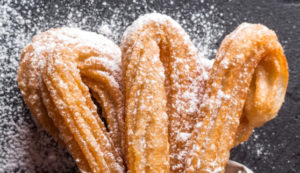
No trip to Spain is complete without fresh churros and chocolate. Seek out El Churrero de Lerin, considered the oldest churro shop in the city. Their graffitied walls and Formica tables are the prefect balance to this freshly cooked snack.
Take a Pintxo tour. Pintxos or Pinchos are small snacks typically eaten in bars. They are often served on a stick and, like tapas, the idea is you buy a number of small plates. Do a Pintxo crawl; a great way to try out the local bars and food at the same time. You can self-guide (basically wander around town and pop in to any place that takes your fancy) or if you’d like to learn more about the gastronomy, then there are plenty of guides you can book who can take you to some of the hidden gems.
Follow in Hemingway’s footsteps. Visit the Café Iruña on the main square. Yes, it is a bit of a tourist trap, but the building and interior is so beautiful it’s worth the visit. Go for lunch – that’s when you’ll see all the locals eating there. They do a set price menu with vegan/vegetarian options – and it’s both filling and delicious. It may not be the height of a gastronomic experience, but the surroundings make up for a lot. Hemingway visited Pamplona nine times, so if you’re a fan there are plenty of places you can pay homage.
Personally, I’d also take a trip to the cookie café. It’s just to your left as you admire the very pretty Town Hall. Stop here for a coffee and a fresh baked cookie. No, it may not be traditionally Spanish, but the cookies, the coffee and view of the square mean you can justify it!
Navarre is full of gastronomic delights, so while you soak up the dramatic countryside, walk the ancient towns, relax in the national parks, and learn the history through its architecture and farms – make sure you take time to savour the flavours of this garden region.
FACT BOX
Tourism Navarre: turismo.navarra.es/eng/home/default.htm
Bodegas Aroa: aroawines.com
The Truffle Museum: museodelatrufa.com
Tudela: turismo.navarra.es/eng/organice-viaje/recurso/Localidades/2606/Tudela.htm
El Churrero de Lerin: facebook.com/elchurrerodelerin/
Hemingway in Pamplona: turismo.navarra.es/eng/organice-viaje/recurso/Rutas/4798/Ruta-de-Ernest-Miller-Hemingway.htm
Navarre Gastronomy: turismo.navarra.es/eng/Productos/gastronomia-vinos.htm
COVID-19 and Spain: gov.uk/foreign-travel-advice/spain/coronavirus
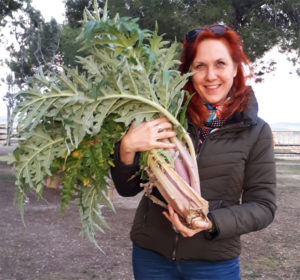 ABOUT THE AUTHOR
ABOUT THE AUTHOR
Chantal Cooke is an award-winning journalist and broadcaster and co-founder of PASSION for the PLANET. Chantal is passionate about vegan food and tourism being used as a force for good. You can follow her adventures on Facebook and Twitter @chantalcooke and on Instagram @Chantaldcooke

